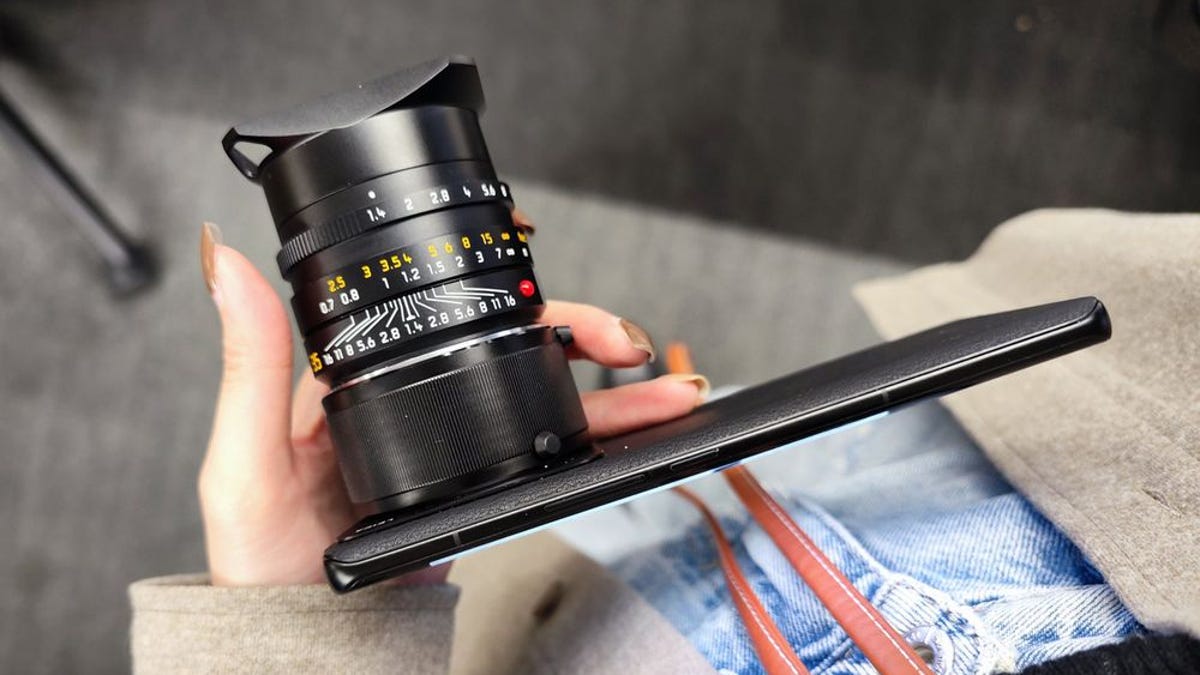Smartphones with interchangeable camera lenses: Hardware chaos or pure genius?
It’s usually January time when companies unveil their craziest ideas of how technology can better our lives, but Chinese technology giant, Xiaomi, has already taken the wraps off of its latest vision: Xiaomi 12S Ultra Concept.
The device, which the company says was designed in tandem with the original 12S Ultra back in July, looks about the same as its sibling but comes with a camera mount that supports Leica’s M-series lenses.
That means that on top of the circular camera module, the larger-than-usual 1-inch sensor, Leica brand partnership, and the phone’s camera capabilities — particularly with optical capture — are greatly enhanced by the added hardware.
Review: Google’s Pixel 7 Pro zooms past Samsung on this one camera feature
A company spokesperson, Agatha Tang, took to Twitter to share some real-life images of the concept phone (seen below). While the device is not expected to hit the open market, it’s great to see the product in action, including the enhanced depth of field that the added lens provides.
Notice the bokeh effect that’s generated with the Leica M lens attached. Image: Agatha Tang (Twitter)
In a product teaser, Xiaomi claims that the mishmash of the 12S Ultra Concept and a full-size lens gives the phone improved “permeability” and an “authentic depth of field,” the latter of which is still an aspect that smartphone photography lags behind when compared to mirrorless and DSLR cameras. Remember, as modernized as today’s smartphones are, many still rely on computational photography and software to generate that dreamy blur in portrait shots and more — not hardware.
A Leica Summilux-M 35mm f/1.4 ASPH lens on the Mi 12S Ultra Concept. Image: Agatha Tang (Twitter)
While the interchangeable lens concept is beneficial, especially if you want the benefits of high-end glass and the mobility of a smartphone, there are some deficits in the practicality side of things. For example, as depicted in the image above, having a physical lens situated on the left side of the phone causes an imbalance when managing the unit. For the sake of ergonomics, traditional lenses are mounted at the center of cameras or counterbalanced with an area for grip.
Like a traditional camera, you’ll also need some form of protection to keep the smartphone’s sensor from dust particles and, worse yet, scratches, when an external lens is not being used. According to the teaser trailer, the 12S Ultra has a sapphire glass layering that remedies this issue. Whether it affects the clarity of shots and how light is captured remains a question.
Also: How Samsung is using AI software to up its smartphone cameras
Adding an external lens is nothing new in the smartphone industry. Samsung’s Galaxy Camera turned the back of the device into a full-fledged camera, Sony’s DSC-QX10/B 4.45-44.5mm lens can latch onto a handset for enhanced zooming, and the likes of Moment have built a brand around phone cases with detachable lenses. But considering how software-reliant mobile photography has become, it’s great to see companies continuing to push the envelope on the hardware end.
For all the latest Technology News Click Here
For the latest news and updates, follow us on Google News.

